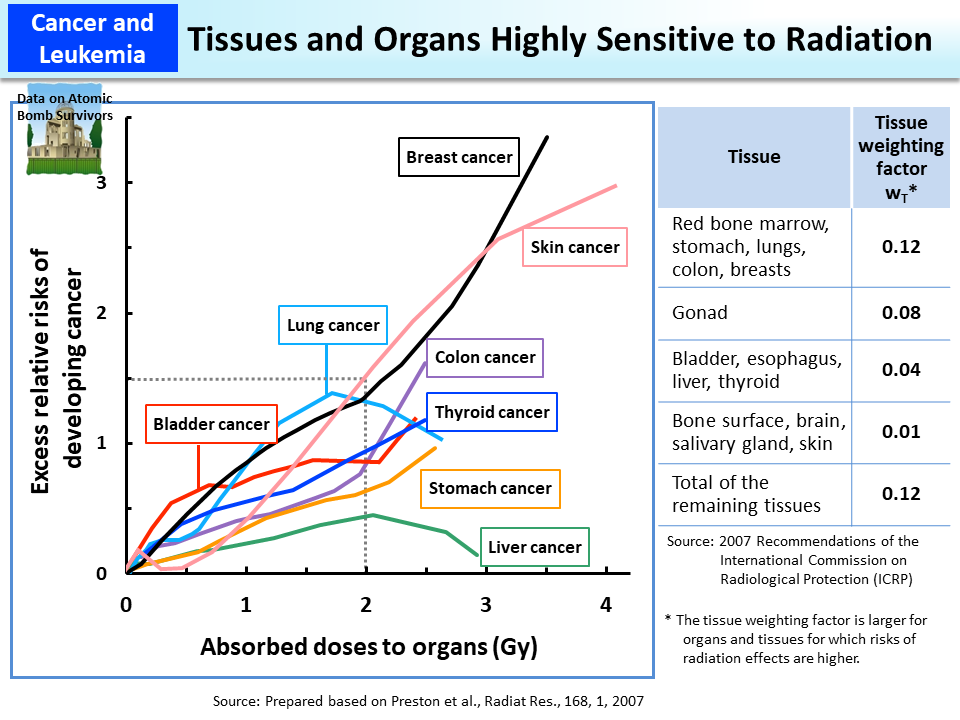Tissues and Organs Highly Sensitive to Radiation
This figure shows how cancer risks have increased for each organ depending on exposure doses, targeting atomic bomb survivors. The horizontal axis indicates the absorbed doses to organs through a single high-dose exposure at the time of the atomic bombing, while the vertical axis indicates excess relative risks, which show how cancer risks have increased among the exposed group compared with the non-exposed group.
For example, when the absorbed dose to organs is 2 Gy, the excess relative risk for skin cancer is 1.5, meaning that the risk increased in excess of 1.5 times compared with the non-exposed group (in other words, among the group of people exposed to 2 Gy of radiation, the relative risk of developing skin cancer is 2.5 times higher (1 + 1.5) than among the non-exposed group).
As a result of these epidemiological studies, it was found that the mammary gland, skin, and colon, etc. are tissues and organs that are easily affected by radiation and develop cancer. The 2007 Recommendations of the ICRP specify tissue weighting factors while taking into account the radiosensitivity of each organ and tissue and the lethality of each type of cancer.
(Related to p.99 of Vol. 1, “Relative Risks and Attributable Risks”)
- Included in this reference material on March 31, 2013
- Updated on March 31, 2019

